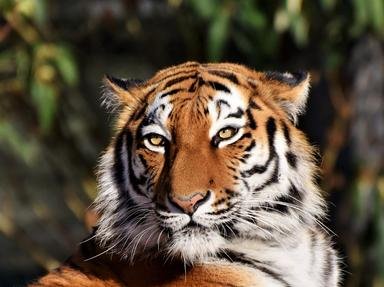Quiz Answer Key and Fun Facts
1. The term for a group of cats is a clowder or glare. Which ancient civilization used domestic cats for hunting?
2. Hopefully you know that the word for a group of lions is a pride, but which of the following types of lions divide their prides by sex?
3. If you see a group of leopards, they would be called a leap or a lepe. Other than prey, what is a favorite place into which leopards leap?
4. The solitary snow leopard does not have a collective noun, but it is known by another name that also is used for a unit of weight. Can you identify it?
5. A collection of tigers is called an ambush or streak. The term "streak" makes sense. Why does "ambush" make sense?
6. A group of specific cheetahs is called a coalition. Which of the following form coalitions?
7. Most collective nouns come from a time when they were used as hunting terms (that is, terms from venery), but the term for the lynx is modern. What prey species is associated closely with the Canada Lynx, giving us information about predator/prey relationships in "food chains"?
8. Most of the New World cats, big and small are solitary. Despite this, which of the following New World cats has been given a collective name?
9. A destruction of wildcats, is a collective name that is not really appropriate, but where can true wildcats be found in the wild?
10. A group of feral cats is called a colony, rather than a destruction. What is a feral animal?
Source: Author
celvet
This quiz was reviewed by FunTrivia editor
rossian before going online.
Any errors found in FunTrivia content are routinely corrected through our feedback system.
